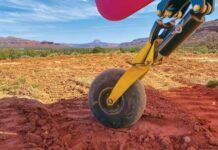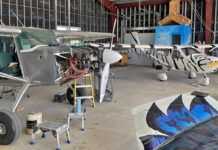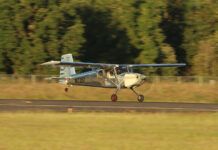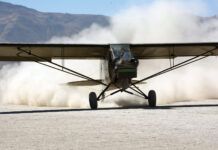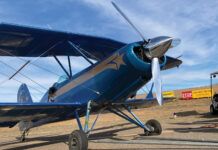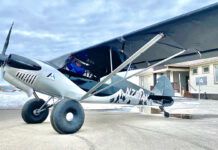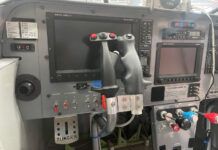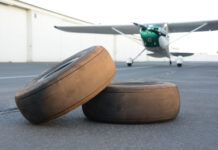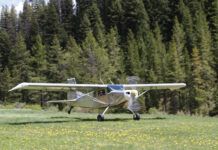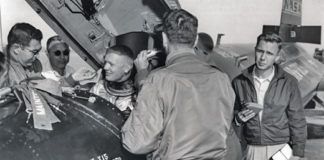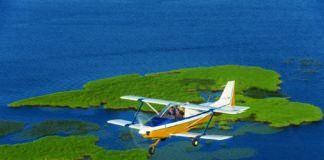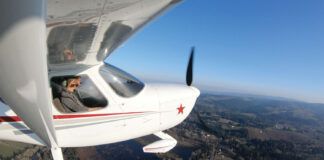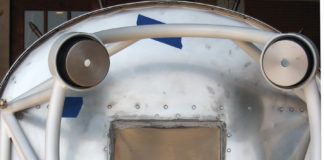Ever wondered what Tundra Tires can do for a bush plane? Here’s a quick summary, based on the first couple of hours of flying our Dream Tundra after stepping up to 25.5″ Goodyear “Blimp” tires. The stock tires for the Tundra are the old standard 8.50×6, and they have done a good job for the first 120 hours on the plane. They work great on pavement and improved gravel or turf strips–but they get a little nervous when the landing surface gets rougher and less improved. Or maybe its just the pilot that gets nervous–it can be hard to tell.
The Blimp tires are just that–designed by Goodyear for the Goodyear blimps! Smaller than the popular Alaskan Bushwheels that we see on the REAL back country airplanes, they are also a bit heavier – with a much thicker tread. In our case, that’s a good thing. Living on a paved runway, with no grass in sight (this is Nevada), the expected life of one of those beautiful, fun-to-fly AB’s can be counted in the double digits for landings. And they are eye-wateringly expensive for a guy used to spending less than $100 for a tire. The Goodyears are never going to compete in pure off-road capability with the AB’s, but they can promise off-airport landings on lake beds and dirt roads as we often find out here in the geological wilds, and do it for a lot longer before showing their cords.
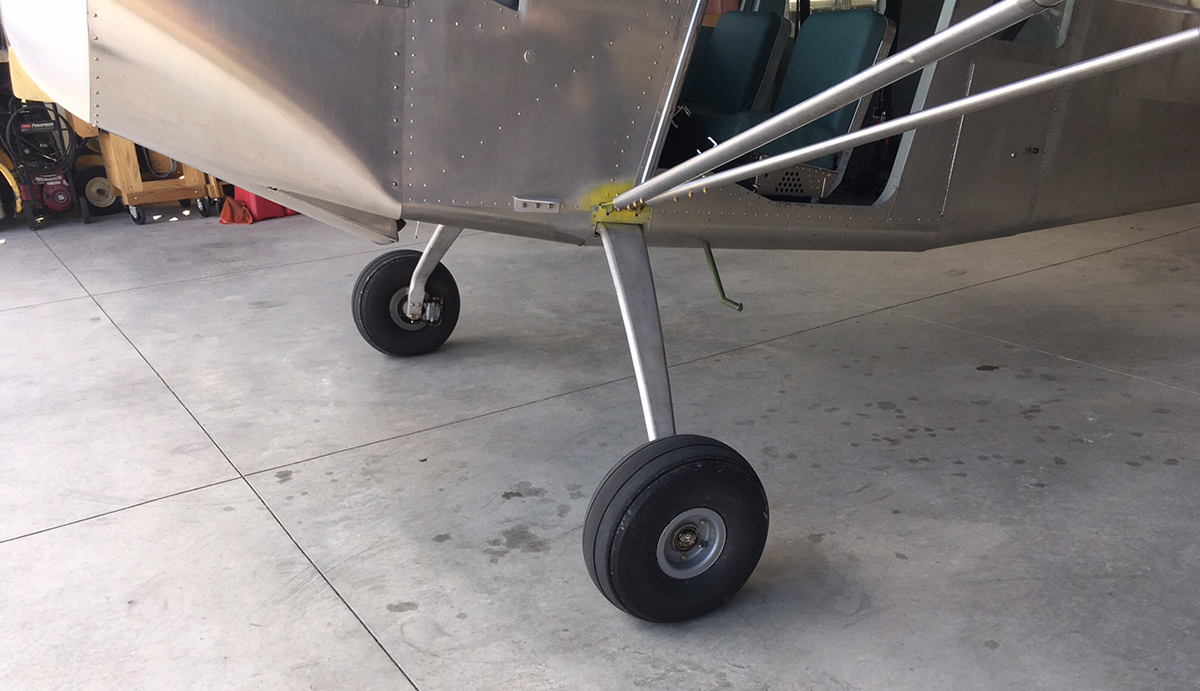
So on they went–on a new set of wheels provided by Robbie Grove for testing purposes (so we didn’t have to mount and demount tires) and it took only an hour or so to hoist the plane up and switch rubber for the first round of experiments. Just before doing the swap, we took the plane up in smooth air and did a max speed run at a density altitude of 8,000′, leaned to peak power, and got a true airspeed of 130 knots. Repeating the same speed run in the calm air this morning, but with the big bald rubber installed, we saw right around 127, maybe 128 knots–a much smaller loss than I expected. Same temperatures, same power settings, same altitude.
Handling on landing, rollout, and taxi is only slightly different, and in a good way–things just feel a bit softer. Because of our record-setting winter, lake beds are still wet in the area, so we’ll sneak up on those, but gravel landing strips are everywhere, and we’ll go hunting some in the coming weeks. We’ll report back what we find here on the web site – and in Kitplanes Magazine.

